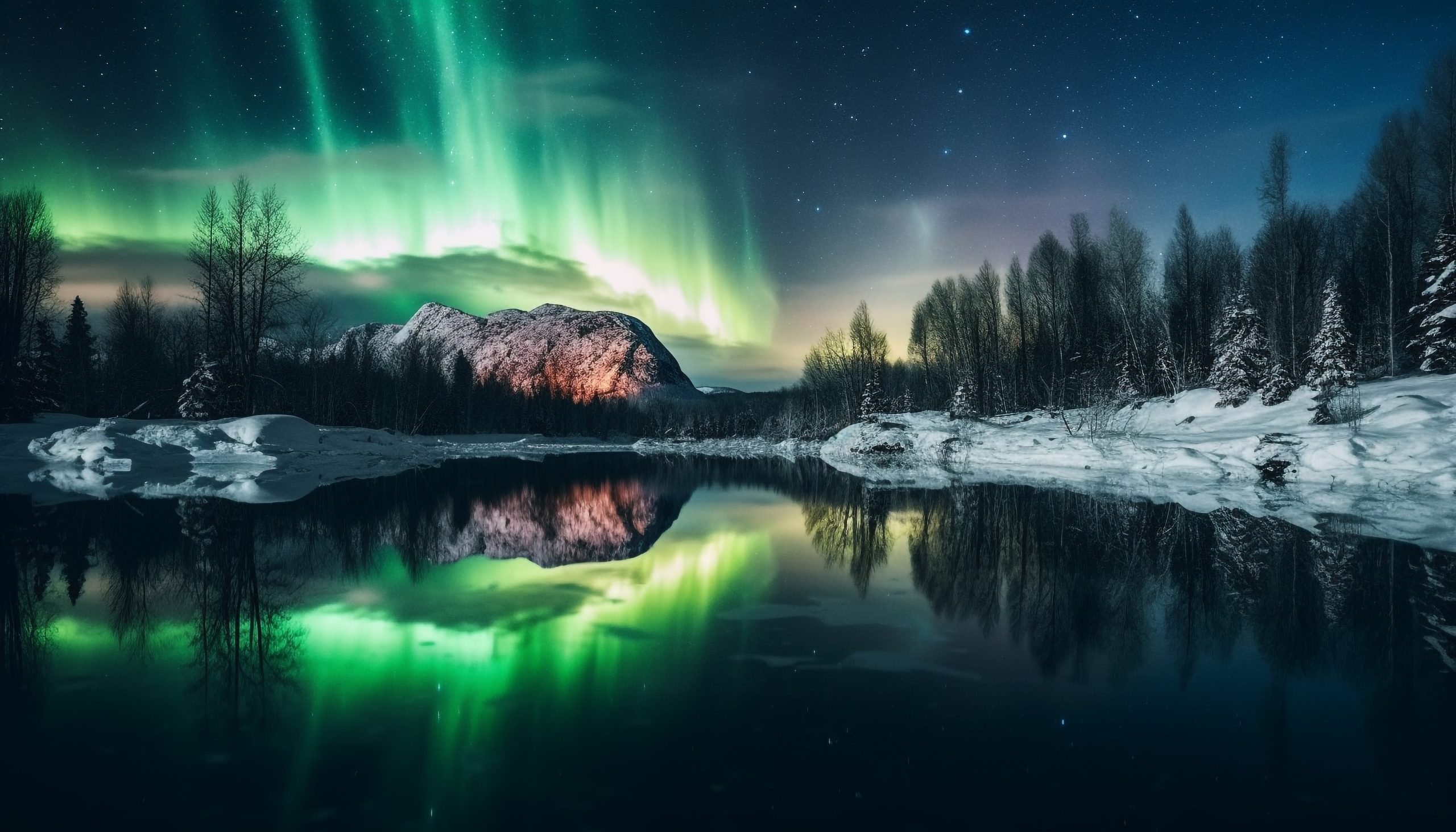
Table of Contents
ToggleStep into a world where magic dances across the night sky, painting vibrant colors against an inky backdrop. Welcome to the mesmerizing realm of the Northern Lights, also known as the Aurora Borealis. These celestial wonders have captivated humans for centuries, inspiring awe and wonder with their ethereal beauty. If you’ve ever dreamed of witnessing this breathtaking phenomenon firsthand, then join us as we embark on a journey to unravel the secrets of the northern lights new york and discover how you can experience them yourself. Get ready to be spellbound by nature’s most enchanting light show!
What Causes the Northern Lights?
The mesmerizing phenomenon of the Northern Lights, also known as Aurora Borealis, has captured the imagination of people for centuries. But have you ever wondered what causes this breathtaking natural light show? Let’s explore the science behind it.
At its core, the northern lights new york are a result of interactions between charged particles from the Sun and Earth’s magnetic field. When there is an increase in solar activity, such as solar flares or coronal mass ejections (CMEs), large amounts of energetic particles are released into space.
As these charged particles travel towards Earth, they collide with molecules in our atmosphere – mainly oxygen and nitrogen. These collisions excite the atoms and molecules, causing them to release energy in the form of colorful lights.
The colors we observe in the Northern Lights depend on which gas is being excited by these charged particles. Oxygen typically produces green and red lights at lower altitudes while higher-altitude displays can feature shades of purple and blue. Nitrogen often contributes to pale pink or purple hues.
The intensity and visibility of this celestial spectacle also rely on other factors like geomagnetic activity levels, atmospheric conditions, and light pollution. That’s why finding a dark location away from city lights is crucial for optimal viewing opportunities.
To catch a glimpse of this awe-inspiring display yourself, it’s best to head towards regions closer to Earth’s polar areas during winter months when nights are longer. Locations like Alaska, Iceland, Norway or even northern Canada offer excellent chances to witness nature’s ethereal dance firsthand.
Where and When to See the Northern Lights?
If you’re eager to witness the mesmerizing beauty of the Northern Lights, also known as the Aurora Borealis, you may be wondering where and when is the best time to catch this natural phenomenon. While they can be seen in various locations around the world, it’s essential to choose a destination with optimal conditions.
Alaska: One of the ideal places to see the Northern Lights is in Fairbanks, Alaska. Its northern location provides dark skies and clear nights for optimum viewing opportunities.
Tromso: Another popular spot is Tromso, Norway. With its position within the Arctic Circle, it offers excellent chances of seeing vibrant displays of lights dancing across the sky.
Iceland: Additionally, Iceland boasts an array of stunning landscapes that serve as a perfect backdrop for witnessing nature’s light show.
Yukon Territory: Canada’s Yukon territory is another prime location due to its low light pollution and frequent appearances of auroras.
To increase your odds of catching sight of these ethereal lights, plan your trip during winter months when there are longer periods of darkness. November through March usually offer better viewing conditions.
Remember that patience is key when chasing after this elusive spectacle; even if you travel during peak season or visit renowned hotspots, Mother Nature may have her own plans. So keep your eyes peeled on those clear winter nights and prepare yourself for an experience like no other!
Tips for Viewing the Northern Lights
Choose the right time and location: To increase your chances of witnessing the mesmerizing display of the Northern Lights, it’s crucial to pick a destination with clear skies and minimal light pollution. In New York, venture northward to areas like Lake Champlain or Adirondack Park, away from city lights.
Check space weather forecasts: The intensity and visibility of the Northern Lights depend on solar activity. Keep an eye on space weather forecasts that predict geomagnetic storms and aurora activity levels. Websites like Space Weather Prediction Center can provide valuable information.
Be patient: Seeing the Northern Lights is a waiting game, so be prepared for some downtime. Sit back, relax, and embrace the beauty of nature while you wait for those elusive streaks of colors to dance across the sky.
Dress appropriately: Remember that viewing the Northern Lights often involves standing outside in cold temperatures for extended periods. Layer up with warm clothing, including thermal layers, hats, gloves, and insulated footwear.
Capture memories: Don’t forget your camera! If you’re lucky enough to witness this natural phenomenon firsthand, capturing photos or videos will allow you to relive these magical moments later on.
Consider guided tours: If you want expert guidance during your quest for chasing Aurora Borealis magic in New York or other destinations around the world, consider joining a guided tour specifically focused on hunting down this celestial spectacle.
Remember that seeing the Northern Lights is not guaranteed even if you follow all these tips diligently – they are a natural wonder after all! So keep your expectations realistic but never stop dreaming about experiencing this extraordinary phenomenon yourself someday soon.
Mythology and Cultural Significance of the Northern Lights
The Northern Lights have captivated people’s imaginations for centuries, giving rise to a rich mythology and cultural significance in various cultures around the world. In Norse mythology, it was believed that the lights were the armor of Valkyrie warriors as they escorted fallen heroes to Valhalla. The Inuit people believed that the lights were spirits playing soccer with a walrus skull!
In Finnish folklore, the lights were said to be caused by a mystical fox swiping its tail across the snow-covered landscape. Native American tribes saw them as dancing spirits or ancestors communicating with them from beyond. Even today, many indigenous communities revere this natural phenomenon as a spiritual connection to their ancestors.
The cultural significance of the Northern Lights extends beyond folklore and legends. They hold great importance in art, literature, and even modern-day tourism. Artists have been inspired by their ethereal beauty and have captured their essence in paintings, photographs, poems, and songs.
For those who are lucky enough to witness this celestial spectacle firsthand, it becomes an unforgettable experience that leaves a lasting impact on their lives. People travel from all over the world just for a chance to catch a glimpse of these awe-inspiring lights dancing across the night sky.
The mythology surrounding the Northern Lights adds an extra layer of enchantment and mystery to an already mesmerizing display of nature’s wonders. It reminds us how diverse cultures interpret natural phenomena differently but share common threads in their beliefs about our interconnectedness with nature.
So next time you find yourself under clear Arctic skies on a cold winter night, remember not only will you witness one of Earth’s most incredible phenomena but also become part of centuries-old stories woven into human culture across generations!
Also Read: DISNEY AND CHARTER HAVE JUST MADE NICE: HERE’S WHAT SPECTRUM CABLE SUBSCRIBERS CAN EXPECT NEXT
Conclusion
The Northern Lights, or Aurora Borealis, are a mesmerizing natural phenomenon that captivates people around the world. These dancing lights in the sky are caused by charged particles from the sun colliding with atoms and molecules in Earth’s atmosphere.
When planning your Northern Lights adventure in New York or any other location, keep a few tips in mind. Choose a clear night with little light pollution for optimal visibility. Dress warmly as temperatures can drop significantly during viewing times. Lastly but most importantly – be patient! The Northern Lights are an elusive phenomenon and may require some waiting before they make their grand appearance.
In conclusion, witnessing the enchanting dance of colors known as the Northern Lights is truly a once-in-a-lifetime experience. Whether you travel to far-flung destinations like Norway or simply step outside your door in search of them within New York state itself; take time to connect with nature’s breathtaking spectacle and create memories that will last forever. So pack your bags (or bundle up) because it’s time to embark on an extraordinary journey under the shimmering curtains of light we call Aurora Borealis!
